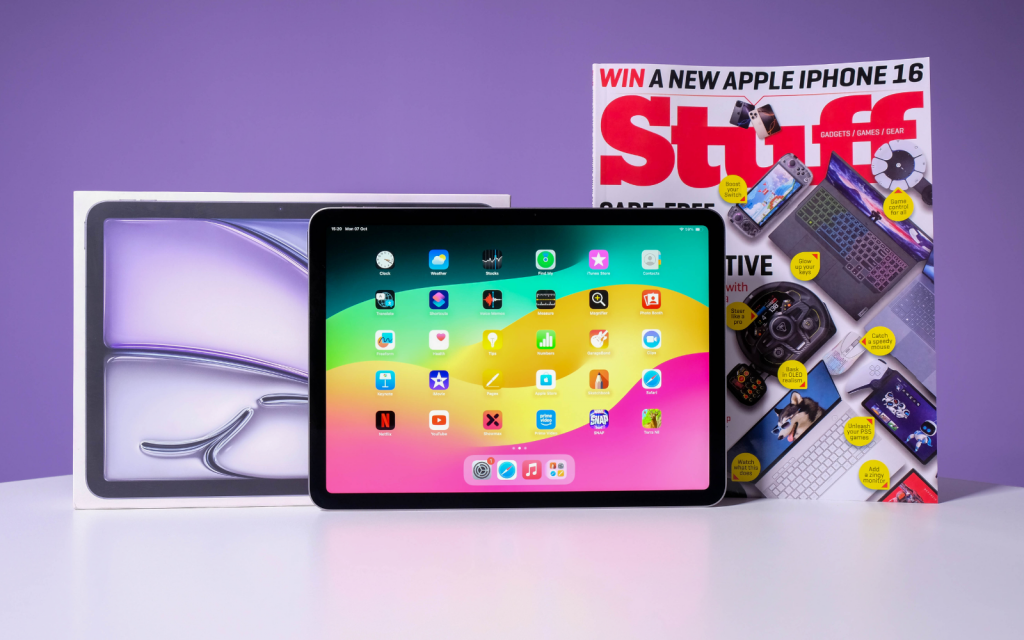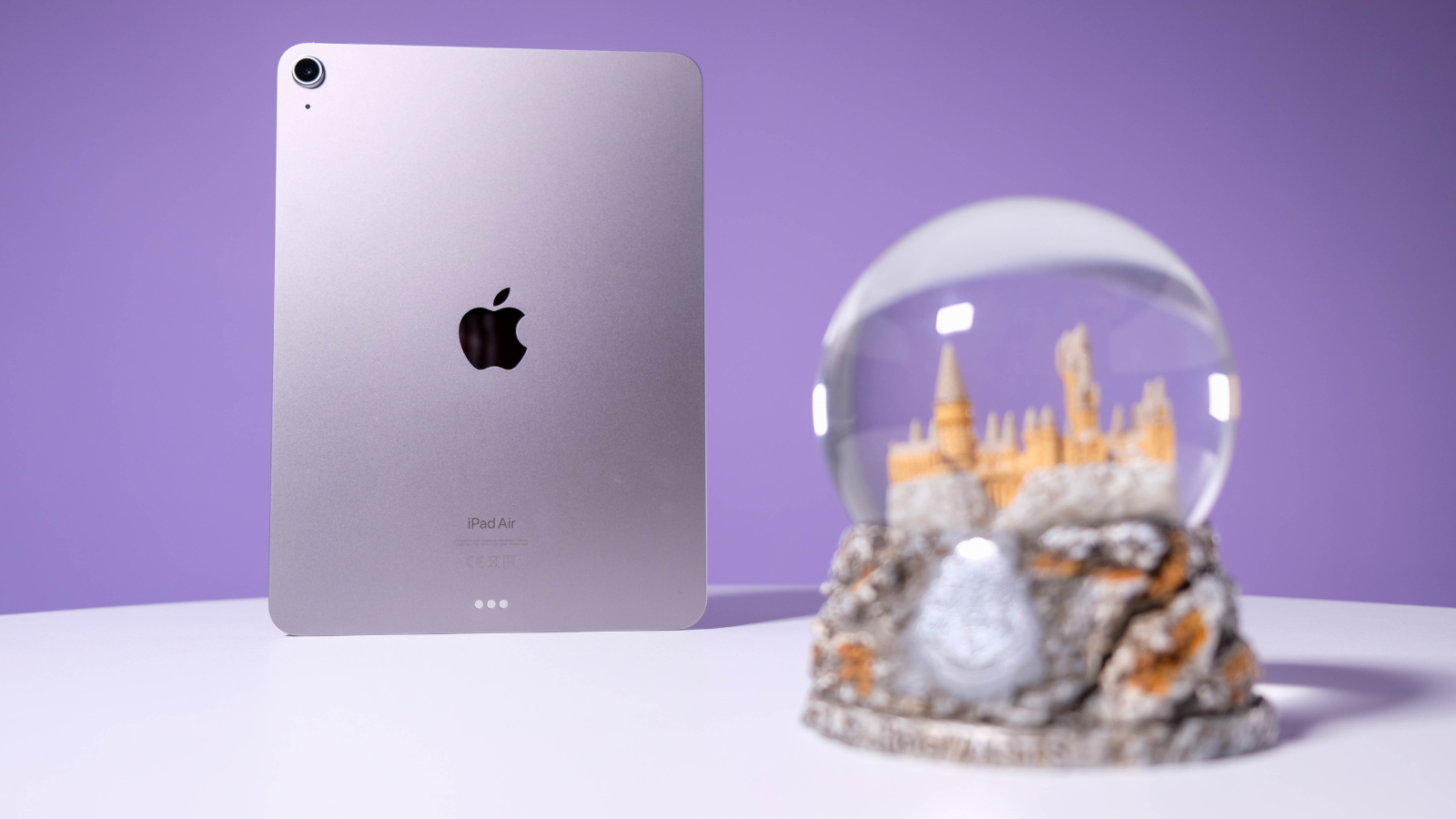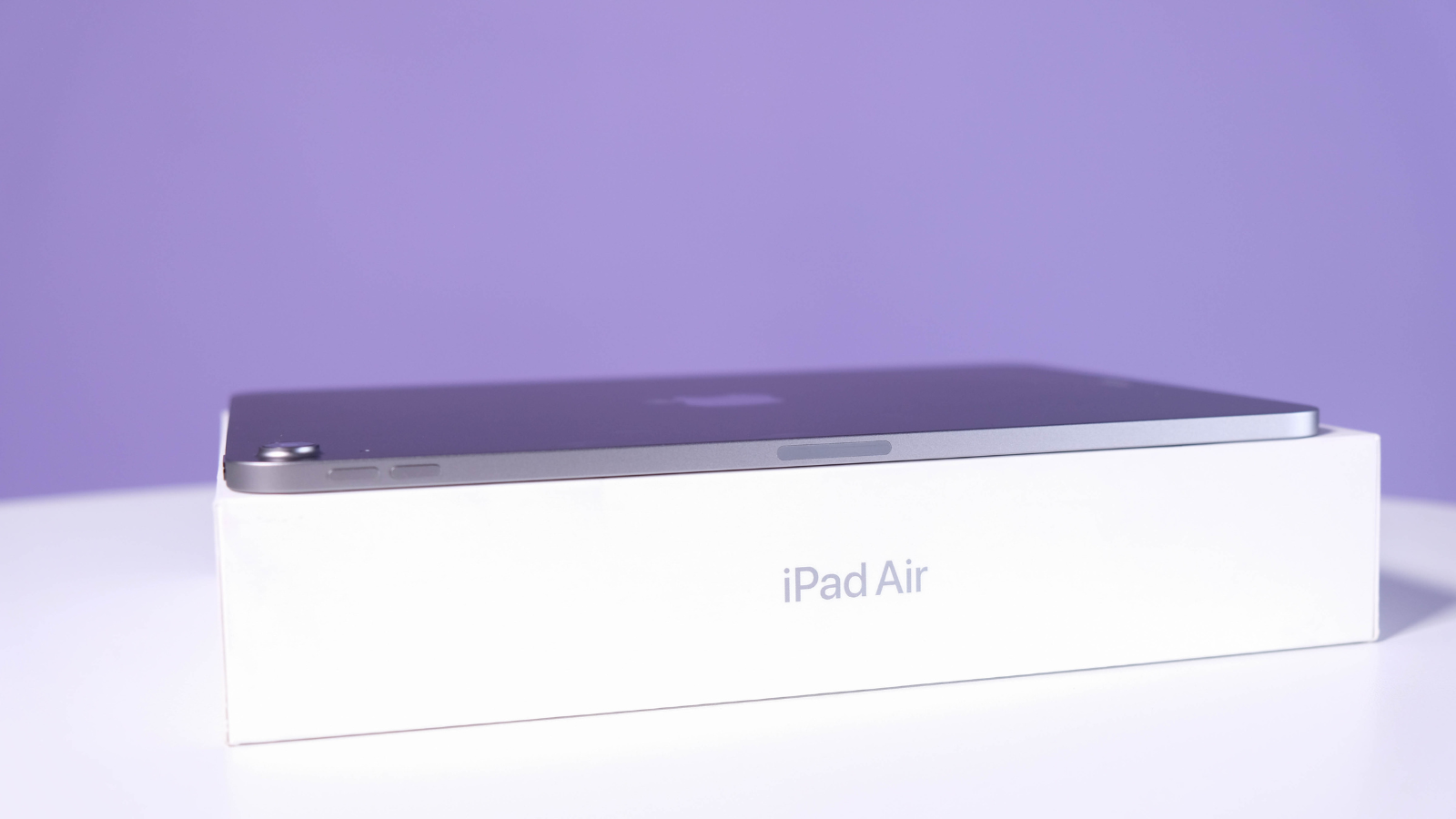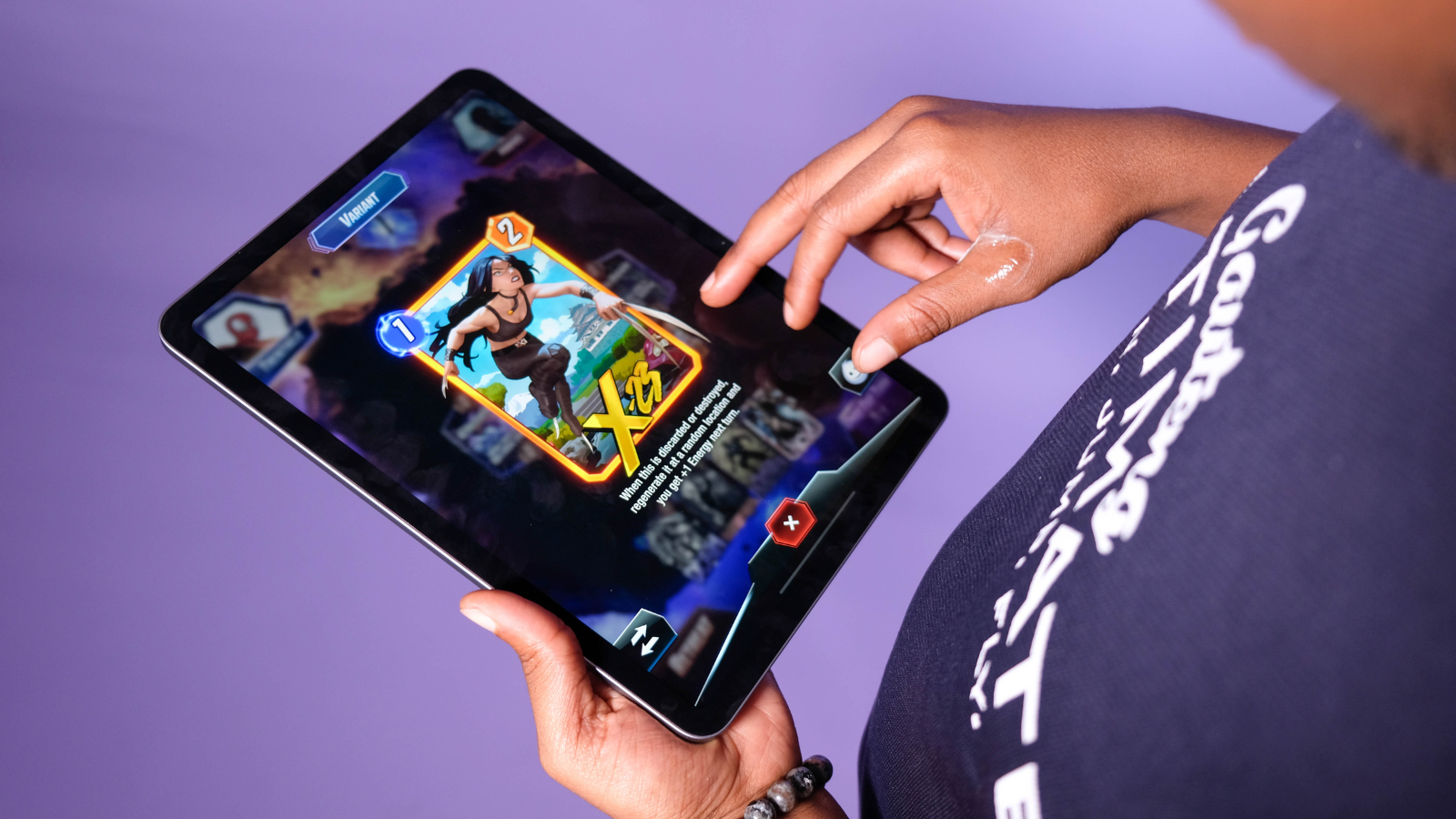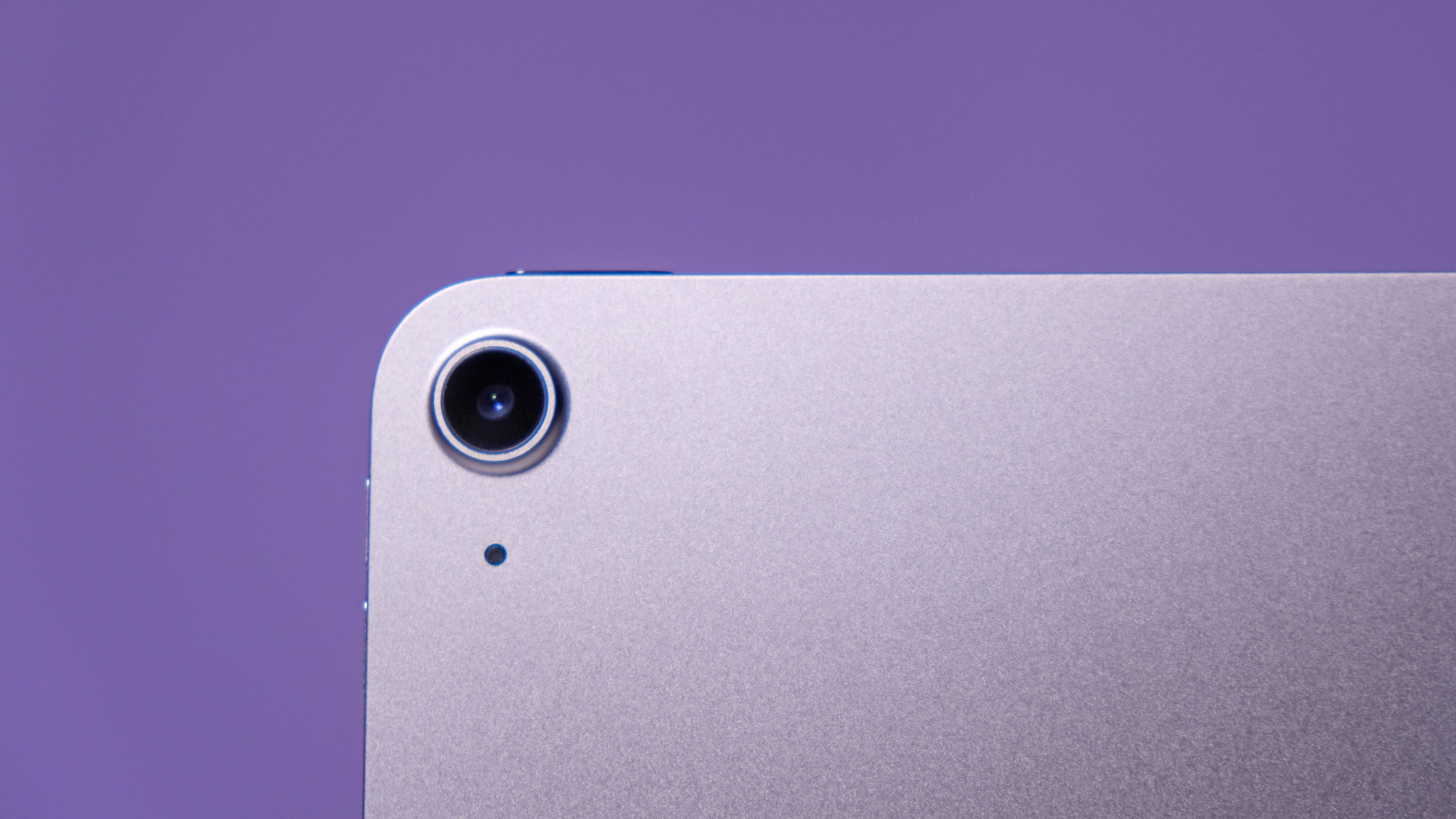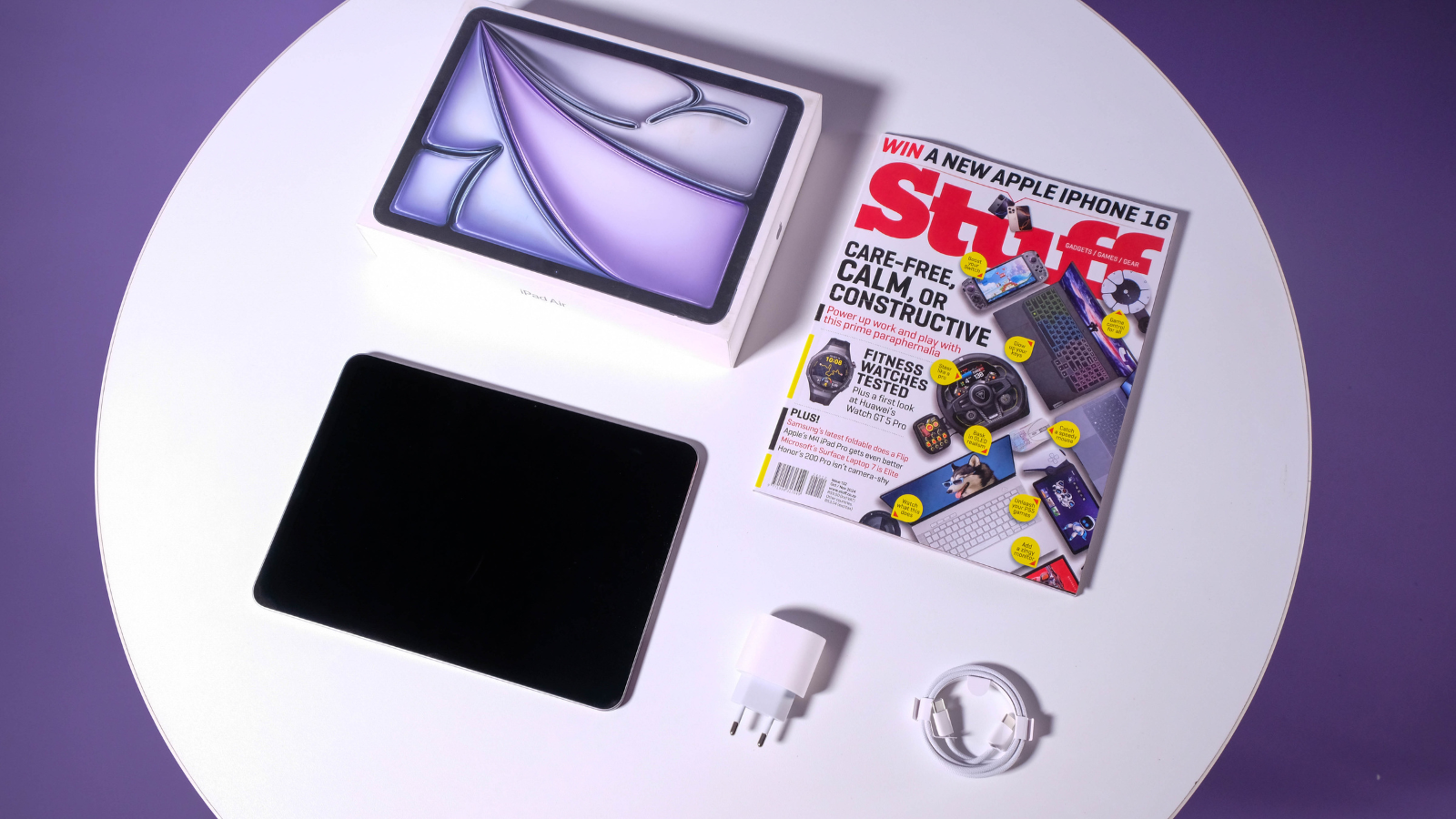This is the iPad to get. Not because the display is excellent (it is), or because the storage has doubled (since the last time we met, Apple) or even because the battery can clear a room full of load shedding ninjas (although it can). It's because of that wonderful M2 chipset, putting the latest Air on par with that of the two-year-old iPad Pro, without breaking a sweat. Or the bank, for that matter.
-
Design
-
Performance
-
Display
-
Battery
-
Camera
-
Value
Apple let loose a reimagined iPad Air (2024) toting an M2 chipset earlier this year and, if you can stomach the price, a bigger, brighter, 13in display – its biggest contribution to this generation. Stuff has since been saddled with the somewhat dimmer though still-impressive 11in display and the lowest storage option available – 128GB. That’s still a bump in the right direction.
If you aren’t all that fussed about watching Netflix or booting up Clash of Clans on a bigger display, you’ll be more than happy with the bog-standard R13,000 iPad Air we’re rocking for this review. Unless the last-gen iPad Air is still tucked away in your drawer, ready for whenever Eskom strikes. The utility, admittedly, has taken an extended sabbatical of late. But if your chipset still has an ‘A’ in front of the number…
“Say my name”
Once upon a time, picking up a new iPad Air meant… something. It meant being sure that, internals aside, you could brag about owning the slimmest and lightest iPad of the day. In 2024, it’s a different story. Sure, the iPad Air M2 is still a technical marvel that’ll garner a “wow” from your mum, but you could say that for just about any iPad these days. Especially in the case of the new iPad Pro which weighs in at 446g, beating out the Air’s 462g heft.
Hell, it’s not even the slimmest iPad. That award, once again, goes to the 2024 iPad Pro, measuring a whole 1mm thinner than the iPad Air’s 6.1mm. There’s no denying it remains impressive and one we’re sure Apple lauds over customers who don’t know any better. But it does raise a couple of questions. Primarily, ‘why are we as a society still mucking about with three iPads?’
Moaning aside, Apple’s left nearly everything entirely the same. You won’t hear us complaining. USB-C returns right where you’d expect it to, being one of the few blemishes on the Air’s gorgeous aluminium edges – which was immediately sheathed. Two speakers sit alongside the port, while another two sit at the other end, right next to the power button that doubles as a fingerprint reader, a necessity with the lack of any FaceID.
We did say “nearly” everything had been left untouched. To better set this hardware apart from the drab, older models, Apple shuffled the front-facing camera. Rather than sitting on the screen’s short end up top, it now resides on the Air’s right side, making for less awkward video calls when flipped horizontally. Incidentally, that’s where you’ll magnetically stash your Apple Pencil (Pro or USB-C are supported).
Still LCD, still… fine
13in or not, the M2 iPad Air features an impressive display. Sure, it’s a tad mightier if you can fork over the difference to pick up a 13in model – not only because it’s physically larger, but because Apple serves up a whole 100 nits of brightness for better-paying customers. Fret not. The 11in model’s 500 nits proved more than satisfactorily boot up Netflix in bed and make do with the Procreate from Wish.
You may be under the impression that the 11in naming convention used here was a small promotion for the Air range, but you’d be wrong. Apple’s site baldly claims: “When measured diagonally as a rectangle, the 11-inch iPad Air is 10.86 inches. The actual viewable area is less.” We guess stacking the brand-new 13in model against a 10.9in one just doesn’t quite roll off the tongue.
We’re happy to let 100 nits slide in exchange for the excellent Liquid Retina LED-backlit IPS LCD tech, even if it has been recycled. The 2,360 by 1,640 resolution at 264ppi (pixels per inch) delivers a crisp picture that’s backed up by a coating of anti-glare tech on the screen that’s not quite good enough for a trip to the great outdoors, but fine for sitting under your bedroom’s obnoxiously bright light.
We can’t forgive the choppy 60Hz refresh rate cap (in 2024?) that impacted our gaming abilities while the folks showing off their Pro devices are showing off Minecraft in 120Hz just because they can. We should also mention that the Air’s screen is about as attractive to our fingerprints as Ana de Armas is to the average male. In other words, you’ll want to keep a microfibre cloth handy.
It’s all about the numbers, kid
This is where things get interesting. Apple’s M2 chipset, while not quite on the same level as the M3 and M4 chipsets, still provides a massive boost in performance over the older M1. Whether you’ll notice any difference as a previous Air owner is up to you and whatever you’re tasking the iPad to do. Watching Netflix? A second-hand three-year-old iPad is more than up to the task. Creating extensive worlds in Procreate? You want that M2 boost.
The M2’s innards feature an eight-core CPU, ten-core GPU, and a 16-core NPU (neural processing unit), helped along by the 8GB of RAM in either model. Storage has seen a bump, too, doubling that of the previous gen’s 64GB base storage up to 128GB here. That’ll stretch up to 1TB if you’ve enough cash to go around, smashing the 256GB limit on the 2022 device. For our uses, 128GB proved enough.
We had no issues bouncing around the iPad like an over-stimulated toddler looking for his next Baby Shark fix. Hopping between streams, drawing tools, and games resulted in no noticeable sluggishness behind the scenes,. If you’re after more solid numbers,, we ran the iPad through Geekbench (6) benchmark to see how it stacks up.
When the dust had settled, we counted scores of 2,626 and 10,052 for the single-core and multi-core tests respectively. All those numbers mean that you’re essentially getting the performance of an iPad Pro from 2022, albeit a little finer, despite using the same M2 chipset here. That’s… a good thing, considering Apple still charges a R17,000 premium on the bloody thing.
Stayin’ alive (and looking great while you’re doing it)
We expected all that jumping about to cause at least some degradation to the Air’s 28.93Wh lithium-ion battery, but it hardly budged. It held on for days at a time, despite multiple instances of gaming, streaming, and drawing in between it all. Apple reckons a full charge is good enough to keep a Friends marathon going for ten hours. We don’t have that sort of willpower (who does?), so we’re willing to believe them.
When it inevitably runs out of juice, Apple’s rated the Air to charge over a 20W cable – beating out even the latest iPhone’s 15W capabilities. An hour or two’s warning is all you’ll need whenever Eskom’s will crumbles under the weight of the rising price of diesel hitting SA soon.
Finally, there’s the camera. We’re not sure who’s whipping out the 11in at their kids’ birthday parties – especially if they already live in the Walled Garden, but it’s there. What’s there is a neat collection of sensors – 12MP on both the front and back. You’ll mostly be using the front for video calls, and it’s a good thing, too, seeing as it’s using a wide-angle lens that isn’t found on the rear.
If you use the rear sensor, the iPad Air supplies passable images especially if you contain your photography ambitions to a well-lit day and avoid the slight grain that comes from a nighttime shoot. Colour is captured effectively on both ends and video shots are fortunately the same.
iPad Air (2024) verdict
Force us to compound that all into a single sentence and you’ll get: The iPad Air (2024) is more than powerful enough to keep up with the more taxing creative applications, at a cheaper price than the iPad Pro. Let us expound upon that, and we’ll tell you that the newer Pros might be the iPad of choice for users looking for more power, and the ability to dive into the nitty-gritty bits of apps like iMovie or GarageBand.
But if all you’re after is a casual iPad with a sublime display (minus the 120Hz refresh rate), a whole lot more storage, plenty of battery, and of course that M2 chipset that’ll seamlessly leap between streaming and games, the M2 Air is an excellent power-house alternative for R13,000.

